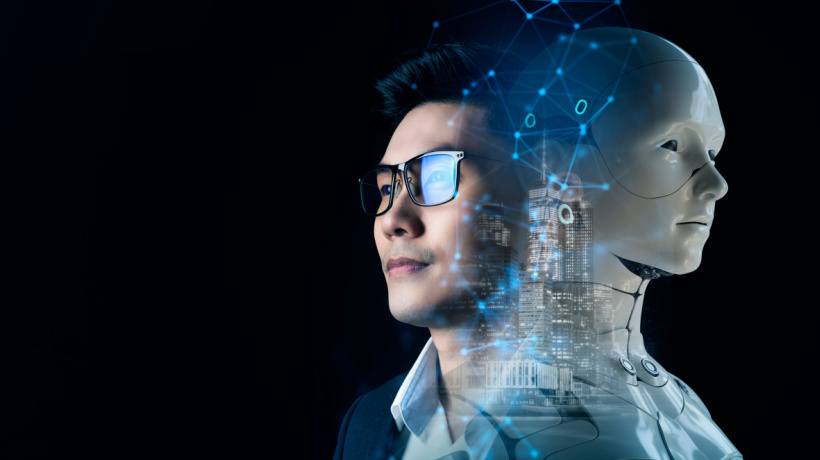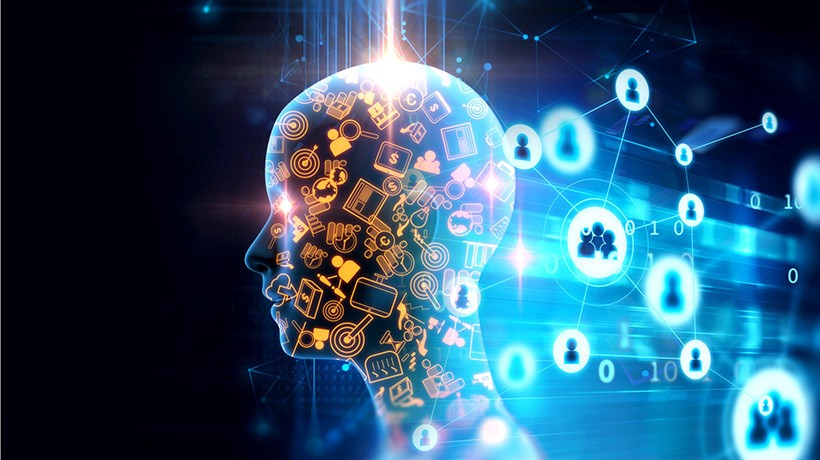Enhancing Personalized Learning And Upskilling Training With AI
Personalized learning aims to provide customized learning experiences that cater to the special needs and learning styles of each learner. AI-powered systems can collect, analyze, and interpret vast amounts of data about learners, enabling the creation of personalized learning paths. By considering factors such as learning preferences, and performance data, AI algorithms can generate tailored content, recommend appropriate resources, and adapt the pace and difficulty level of the learning materials. This personalized approach fosters learner engagement and motivation and, ultimately, enhances learning outcomes.

Key Applications
Artificial Intelligence has found numerous applications in eLearning platforms, revolutionizing experiences and the way we acquire knowledge and skills. Some key applications include:
Adaptive Learning Experience
AI algorithms analyze learner data to dynamically adjust the content, sequencing, and delivery of learning materials, ensuring an optimal learning experience for each individual.
Guided Learning Experience
AI-powered tutoring systems simulate human tutors by providing immediate feedback, answering questions, and guiding learners through complex concepts.
Real-Time Learning Experience
AI enables chatbots and virtual assistants to understand and respond to learner inquiries, providing real-time support and enhancing the learning experience.
Gamified Learning Experience:
AI algorithms can analyze learner behavior and preferences to create personalized gamified experiences, motivating learners and promoting active engagement.
Limitations To Consider
While AI brings tremendous potential to personalized learning, it is essential to acknowledge its limitations. Some considerations include:
Data Privacy And Security
AI relies on collecting and analyzing vast amounts of learner data. Organizations must ensure strict data protection measures to maintain learner privacy and security.
Algorithm Bias
AI algorithms are designed by humans and are heavily dependent on human interaction which is why the results mimic human intelligence. Organizations must carefully monitor and mitigate biases to ensure fair and equitable learning experiences for all learners.
Human Interaction
Although AI can simulate human-like interactions, the value of human connections and guidance should not be underestimated. Striking a balance between AI-driven personalized learning and human interaction is crucial.
Key AI Trends Shaping The Future Of L&D
As AI continues to advance, its impact on L&D is poised to grow further. AI can assist in identifying skill gaps, recommending learning paths, and predicting future learning needs based on individual performance and market trends. With ongoing advancements, AI has the potential to revolutionize the way we learn, upskill, and reskill, empowering individuals and organizations to thrive in a rapidly evolving world.
Additionally, AI-powered virtual reality (VR) and augmented reality (AR) applications can provide immersive learning experiences, enabling learners to practice skills in realistic simulations. Here are some key trends and possibilities shaping the future of L&D:
Personalized And Adaptive Learning
As technology continues to advance, L&D programs will become increasingly personalized and adaptive. AI-powered algorithms will analyze learner data to create tailored learning experiences, considering individual preferences, skill gaps, and learning styles. Adaptive learning platforms will dynamically adjust content and delivery methods to optimize learning outcomes.
Immersive Technologies
VR and AR have already revolutionized training and development by providing immersive and interactive learning experiences. VR simulations will allow learners to practice skills in realistic scenarios, while AR overlays digital information onto real-world environments, facilitating on-the-job learning and performance support.
Data-Driven Insights
Big data analytics will play a crucial role in L&D, offering valuable insights into learner behavior, skill gaps, and training effectiveness. Predictive analytics will anticipate future learning needs, enabling organizations to proactively address skill requirements and align learning initiatives with business goals.
Continuous Learning And Upskilling
The future of L&D will prioritize continuous learning and upskilling to meet the demands of a rapidly changing workforce. Lifelong learning will become the norm, with organizations investing in ongoing development opportunities to keep employees relevant and adaptable in a digital age.
Collaborative And Social Learning:
L&D will increasingly emphasize collaborative and social learning approaches. Social learning platforms, discussion forums, and online communities will facilitate knowledge sharing, peer-to-peer learning, and collaborative problem-solving. Learning will be viewed as a collective effort, fostering a culture of continuous improvement.
Soft Skills Development
As automation and AI reshape job roles, the importance of soft skills will grow. L&D programs will focus on developing critical skills such as communication, adaptability, emotional intelligence, and creativity. These skills are essential for success in the future workplace, where human interaction and innovation are highly valued.
Learning Experience Platforms (LXPs)
LXPs will continue to evolve, providing learners with personalized, curated, and engaging learning experiences. These platforms will aggregate diverse content sources, foster social learning, and offer intuitive interfaces that prioritize user experience.
Conclusion
The future of L&D is characterized by personalized, adaptive, and technology-driven learning experiences. With a focus on continuous learning, upskilling, and leveraging emerging technologies, organizations will be better equipped to develop agile, adaptable, and high-performing workforces.
Download AI-Driven Personalized Learning – Revolutionizing Blended Learning today to discover how you can leverage AI to make learning personal. Also, join the webinar to learn how to launch AI-enabled blended learning for upskilling and reskilling.










